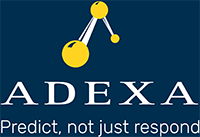Self-Optimizing Algorithm for Demand Planning and Inventory Optimization
Inventory is just an accumulation of costs, until it gets sold and moved out to a customer. So, the basic issue is how to make inventory move or as they say “turn.” Lack of inventory at the right time means loss of revenue and potentially loss of market share. In the absence of a crystal ball there are many ways to increase the speed of moving inventory. The faster it moves the more revenue and less cost. Our underlying assumption is that there is demand but we are not certain about when, where and for what mix of products.
Postponement strategies have been around for a long time and they have proven to be very effective. However, with the increased complexity in product configurations, distribution locations and fluctuations in demand, it is not enough. Another strategy is having the ability to react faster to the market place. This can be done by having digital planning systems, not just S&OP but also S&OE, to react in real-time to changes in demand and ensure on-time deliveries by reconfiguring the plans and schedules. Given tens of millions of variables in making such decisions, only systems have the capability to perform such an operation and deliver near-optimal results in real-time. Needless to say, that the faster you can execute (react) the less planning is needed and vice versa the better quality plans you make the less need for reacting.
As good as your planning system might be, you are still at the mercy of your suppliers and how fast they can react! Unless you have had a chance to predict a big surge in demand, you may not have the necessary ingredients to make the needed end items! In recent years, better demand planning and forecasting has helped to make good predictions of what is needed and how much inventory is needed where and when. More importantly, we are now at a point to be able to improve the behavior of the forecasting algorithms by making observations about the algorithms themselves. In other words, self-optimizing algorithms! By making observations about the goodness of forecasts regarding different products and different policies, we can find patterns of behavior using machine learning techniques, that can help us to always select the best policy and the best algorithm to deliver the best forecast every time. This is done by the use attributes and attribute-based planning. The use of machine learning also helps to select relevant data and unprecedented events that can influence the outcome of the forecast. There are many examples of this nature such as Covid-19 or blockage of Suez Canal that can influence both the supply and demand of products.
By examining many attributes of regions, weather, locations, product options, etc. we can uncover patterns of behavior that are hidden and not visible to humans. This strategy when augmented by Multi Echelon Inventory Optimization (MEIO) can yield highly accurate predictions of how much inventory is needed where and when for each SKU. This technique looks at commonality of products at every stage of the supply chain and examines the tradeoff between service level and cost by product, product family and customers or customer tiers. In the process, millions of variables are examined to deliver highly accurate results that can save companies tens of millions of dollars in potential excess inventory at the same time improving the on-time delivery performance transforming your business into a much greener supply chain.

“We are now at a point to be able to improve the behavior of the forecasting algorithms by making observations about the algorithms themselves.”
Learn more about above strategies such as Machine Learning for Demand predictions and MEIO, click Here.


